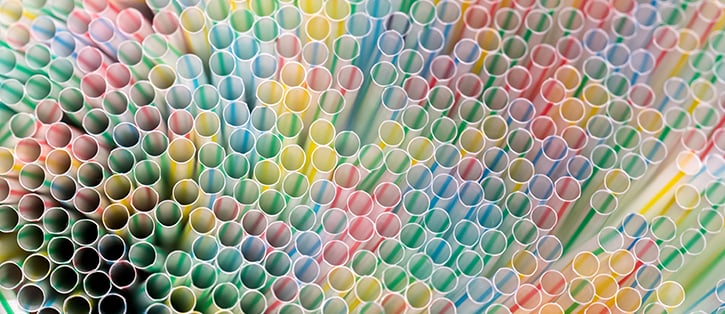
Every day across the United States, approximately 500 million plastic straws make their way into landfills. That's enough used plastic straws to circle the earth 2.5 times or fill 46,400 school buses. Scientists estimate that it can take hundreds of years for a single plastic straw to decompose. With that in mind, many schools and student-led organizations across the country are looking to reduce or eliminate plastic straws on campus and in their communities.
Milo’s Last Straw
When a video of a sea turtle who had a straw removed from its nose went viral in 2015, students and schools began to look at their straws in a different way. Milo Cress, a student from Burlington, Vermont, received a straw in his drink and questioned why it was there. He felt it was wasteful as he wasn’t going to use that straw again and didn’t want it to begin with.
Milo, who was nine years old at the time, went around to local restaurants in the area asking them to only offer straws when customers asked. Many restaurants found this to be beneficial not only from an environmental standpoint, but it also saved them money.
Milo then went on to found the Be Straw Free campaign in 2011 and is currently traveling around the world to speak at different events.
From Plastic to Paper
Salem Public Schools in Massachusetts has also started to ditch plastic straws for paper straws. The initial movement began last year when Deb Jeffers, the district's food services director, wanted to stop offering "spork kits" and begin using utensil dispensers so students would only take what they needed. Her next step was to get rid of the straws.
When Jeffers saw the infamous turtle video, she also knew that something had to be done. "I wanted to get rid of the straws. I hate them," she said. While they worked to procure new paper straws from a regional vendor, she eliminated plastic straws from all her school cafeterias, except a small amount for those students that needed one due to physical limitations.
Students have been very receptive to the paper straw transition along with their superintendent. “Part of our work as educators is preparing our students for the future, for lives as contributing adults,” said Margarita Ruiz, Superintendent of Salem Schools. Paper straws provide a biodegradable alternative at nearly the same price as plastic straws; when purchased in bulk, they can even be found for a few cents a piece.
Sustainability Without Straws
Anja Clark, a student and leader of the Environmental Club at Harvard-Westlake School in Los Angeles, California, suggested that their plastic straws be replaced with paper ones. After many discussions with the school's science teacher, head of upper school, chief financial officer, and other students, it was determined that the transition from plastic to paper would be the right one.
Paper straws are a great way for everyone to get involved. Even though it’s a small action, it takes a big step towards resolving some environmental issues. When students were asked about this transition, many said that these are baby steps for moving towards a plastic-free school. “The Environmental Club is focusing on making the school more sustainable and trying to shift the culture of students to be mindful of their consumption and its consequences,” said Anja.
Students and schools all across the country are getting together to help phase out the use of plastic straws. Important small changes help get staff, students, and communities involved to make a difference. Has your district taken any steps towards reducing plastic straws? If so, please share in the comments section below:








